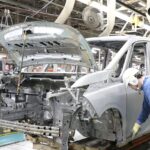AI-Generated Food Images More Appetising Than Reality

University Of Oxford Study Reveals
In a groundbreaking discovery coinciding with Global Nutrition and Hydration Week 2024, researchers at the University of Oxford have unveiled a fascinating revelation: consumers prefer AI-generated food images over authentic ones, particularly when unaware of their origin.
These findings, published in Food Quality and Preference, provide a fresh perspective on the captivating allure of AI-generated visuals in food representation.
Under the leadership of Giovanbattista Califano from the Department of Agricultural Sciences at the University of Naples Federico II, the study delved into the intricacies of food aesthetics.
It uncovered how AI-generated imagery excels in enhancing the appeal of depicted foods. By leveraging features such as symmetry, shape, glossiness, and lighting, AI algorithms craft images that captivate viewers’ senses, heightening the perceived attractiveness of the displayed foods.
Subtle Adjustments
Explaining the nuances behind AI’s creative prowess, Califano elucidated the subtle adjustments made by AI in food positioning.
Remarkably, the AI often avoids positioning food items directly pointing at viewers, a tendency believed to mitigate discomfort and elevate visual appeal—an observation warranting further investigation.
The study, which involved 297 participants, presented authentic and AI-generated food images across a spectrum of natural, processed, and ultra-processed foods; when participants were informed about the image creation process, their ratings of authentic and AI-generated images aligned.
However, when unaware of the origin, AI-generated visuals consistently garnered higher ratings for appetising appeal.
Professor Charles Spence, co-author and supervisor from the Department of Experimental Psychology at the University of Oxford, issued a stark warning about the potential risks of proliferating AI-generated food imagery.
While these images offer cost-saving opportunities for marketers by bypassing traditional photoshoots, they also pose a significant risk of exacerbating ‘visual hunger’—a phenomenon that triggers appetite and cravings upon viewing food images.
Unrealistic Expectations
Such influences could steer consumers towards unhealthy eating behaviours or foster unrealistic expectations.
Moreover, the study unearthed tendencies within AI-generated images to depict foods as more energy-dense than reality, often exaggerating abundance.
This propensity, rooted in humans’ evolutionary inclination towards energy-dense foods, raises concerns regarding promoting unhealthy eating habits through cue-induced consumption of idealised food representations.
Furthermore, as global efforts towards sustainable consumption gain momentum, the perpetuation of AI-enhanced food images threatens to propagate unrealistic standards of natural foods’ appearance.
This trend could undermine sustainability initiatives, diverting consumer preferences towards an unattainable aesthetic ideal.
The study’s revelations underscore the complex interplay between technology, consumer perception, and societal norms in shaping contemporary food culture.
As AI continues to redefine visual representations of food, it prompts critical reflections on the implications for public health, sustainability, and societal well-being.
Featured image: The perpetuation of AI-enhanced food images threatens to propagate unrealistic standards of natural foods’ appearance. Credit: Nerfee Mirandilla













